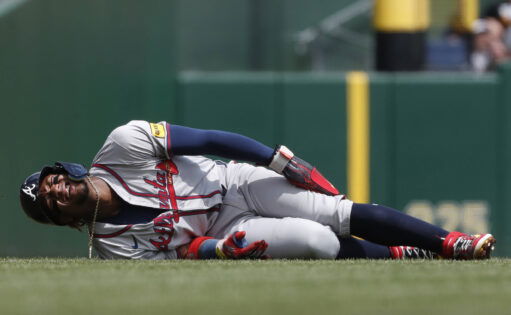We’re just a few months away from the playoffs. Looking back at how the season began, we can see how the injury bug has bitten almost every MLB team and devoured the entire pitching staff. One of those was the Dodgers, who, time and again, had to operate with most of their starting pitchers sidelined. At one point, they had as many as 14 pitchers sidelined. The Bronx Bombers have fared no better; the Yankees have lost pitcher after pitcher, including Gerrit Cole, who did not take the mound this season. In such a desperate time, advice from a legend could work wonders. Perhaps, the teams should pay attention to the Braves legend, a figure who’s seen baseball at its grittiest and most glorious.
All the teams have witnessed their prized starters going on 15- to 60-day stints on the injured list. In such a desperate time, advice from a legend could work wonders. Perhaps, the teams should pay attention to the Braves legend, John Smoltz, a figure who’s seen baseball at its grittiest and most glorious.
“We’re going to start having a competitive advantage by keeping our guys healthy no matter what happens,” Smoltz said, via Foul Territory. “Over time, I would argue you’re going to gain a bigger advantage than if you just say, ‘Hey, this team had a bunch of injuries. We got lucky one year.’ You’re not escaping it. This is not something you’re escaping.” It isn’t flashy. It isn’t a quick fix. But it was the sort of hard-earned truth that separates the hopeful from the champions: a competitive advantage hiding in plain sight.
The FOX MLB analyst even expressed his shock over how organizations have handled their pitching staffs, saying, “I’m shocked that for 10 years, this has been going on and that nobody in an organization says, ‘We are going to reinvestigate and reinvest in different commodities and different ways to see these three pitchers that I have as studs. I want them healthy next year. I want them healthy in the next two years.” He believes having healthy starters is one of the primary ways to gain a competitive advantage over other MLB teams.
John Smoltz wants to see teams make more of an effort to keep pitchers healthy.
“Over time, I would argue that you’re going to gain a bigger advantage.” pic.twitter.com/DZgS2XBvGN
— Foul Territory (@FoulTerritoryTV) August 10, 2025
Even one of the sport’s highly regarded medical minds, Dr. Neal ElAttrache, shared his stance earlier this year. “You have to go back to being able to have the stamina to be just as productive in late innings as you are earlier in the game. Maybe your velocity is going to tick down a little bit.” His experience suggests that starters can pitch effectively over a long period with a training model that moves away from maximum effort on each pitch. Well, that would mean a dip in velocity, but pitchers won’t lose the stamina to be productive in the upcoming innings.
Interestingly, not so long ago, an MLB clubhouse shared the solution to reduce the number of young arms succumbing to an epidemic of career-altering elbow injuries. The San Francisco Giants suggested that the ideal way to safeguard elite arms isn’t for starters to pitch less. Instead, they should pitch more. “If I were training to run a marathon, my training wouldn’t be to not run,” Giants vice president of player development Randy Winn said.
Yet, despite such unconventional suggestions on workload management, the scale of the injury crisis shows just how deeply the problem has taken root across MLB.
Behind the growing crisis of pitcher injuries in MLB
By June, there were 181 pitchers on the injured list within the first eight weeks of the 2025 MLB season. Out of 181, 47 underwent Tommy John surgeries, 41 dealt with elbow injuries, 25 with flexor/forearm issues, 18 with lat strains, and 50 with shoulder/rotator cuff issues. It’s not like no actions were taken. The league made every effort, such as pitch count monitoring, load monitoring, and more advanced treatments, but the problem still persisted.
As per many experts, the main reason behind the growing pitcher injuries in MLB is the shift in pitching styles. Elite arms have been throwing many breaking pitches. The alarming focus on speed and breaking pitches is the reason why pitchers are pushed beyond their body’s physiological limits.
Back in 2004, fastball usage was 62.6%, whereas in 2025, it’s 47.8%. However, the average fastball velocity has surged from 90.1 mph to 94 mph, with the highest being over 100 mph. Slider usage also spiked from 13.6% to 22.4%, and cutter usage from 1% to 7.5%. The usage of sliders and cutters doubled over the last 22 seasons.
EDITORIAL USE ONLY PUBLICATIONxINxGERxSUIxAUTxONLY Copyright: xJaynexKamin-Onceax 20250619_jko_aj4_102
The starters were once expected to last for most or all of the matchup. They were able to do so by pitching while conserving their energy to stay more durable. But the clubs lately expected power above everything else, which eventually led to elbow-shredding velocity expectations. They don’t value stamina anymore the way they value throwing with maximum effort.
That also leads to increased instances of batters being hit by pitches. The Padres-Dodgers series is an example of that. Fernando Tatis Jr. was hit multiple times by Dodgers pitchers over the course of the series. What do you think—should the clubs prioritize the pitcher’s stamina or velocity?
The post Braves Legend Drops Crucial Advice MLB Teams Must Hear for ‘Competitive Advantage’ appeared first on EssentiallySports.
